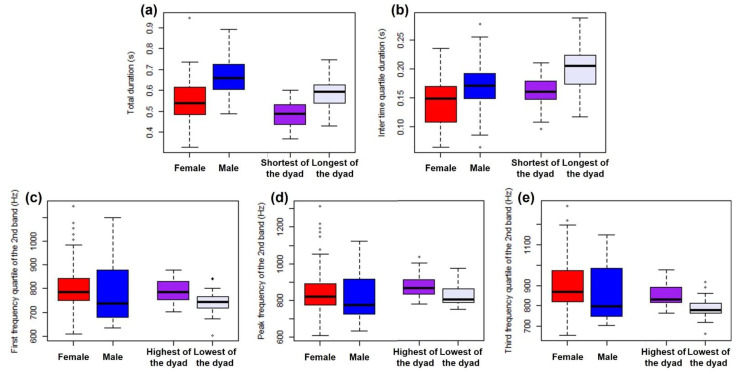Figure 9.
Acoustic parameters of maned wolf roar-barks analyzed separately for captive (recorded manually in 2 facilities at Minas Gerais state, Brazil) and for free ranging wolves (recorded passively in the Serra da Canastra National Park, MG/BR). In captivity the differences between females (red) and males (blue) were tested using a linear mixed model controlling for individual and sequence (males are longer, no other parameters significantly differ). The parameters of free ranging wolves were measured and paired within each dyad interactive roar-bark sequence (2 animals) using paired Wilcoxon tests. Individuals were only compared to the one they were interacting at the moment (participants differ significantly in all parameters). For visualization only, for each comparison the shortest in duration and highest in frequency of the dyad was set in the first box (purple) of the free ranging data and the other in the next box (lavender). (a) Total duration; (b) InterQuartile duration; (c) 1st frequency quartile of the 2nd band; (d) Peak frequency of the 2nd band; and (e) 3rd frequency quartile of the 2nd band.

